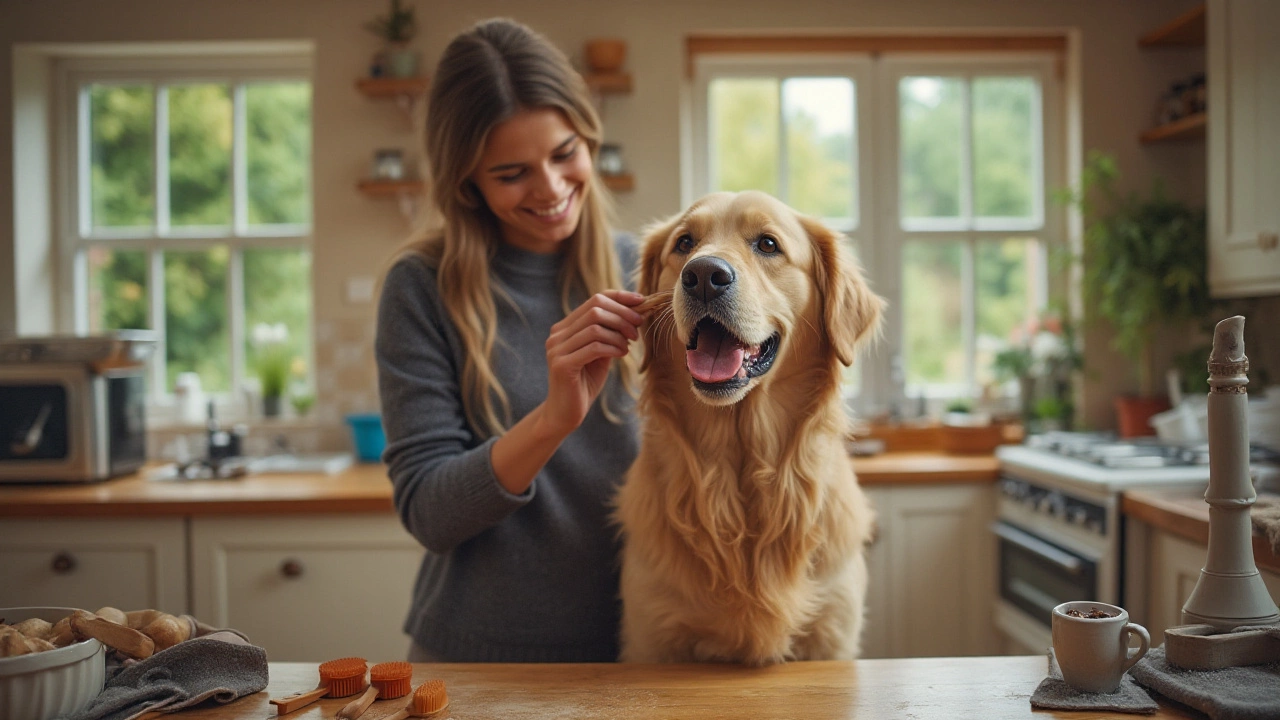Safe Dog Grooming Tips: Keep Your Pup Happy & Healthy
Grooming should feel like a mini‑spa, not a nightmare. If your dog is trembling or the fur looks messier after a session, something’s off. Below you’ll find simple, down‑to‑earth steps that make grooming safe, comfortable, and even fun for both of you.
Bathing and Brushing Basics
First question most owners ask: "Should I bathe my dog before grooming?" Our article Should a Dog Be Bathed Before Grooming? The Real Deal breaks it down. A quick rinse removes loose dirt and makes brushing easier, but a full soak isn’t always needed. Use lukewarm water, a gentle dog‑shampoo, and keep the head dry to avoid ear problems.
While the coat is still damp, grab a slicker brush or a metal comb—whichever matches your dog’s hair type. Start at the tail and work forward; this direction follows the natural lay of the fur and reduces pulling. If you hit a knot, don’t yank. Apply a little conditioner or a detangling spray, then gently tease it apart with your fingers before brushing again.
Tools, Nails, and Ears
Choosing the right tools is a safety game changer. A plastic nail clipper may feel safe, but it can crush a nail if you’re not careful. Stainless steel grinders give you control and less chance of splitting the nail. Trim a little at a time and watch for the quick (the pink part). If you’re unsure, clip just enough to keep the nail from clicking on the floor.
Ears are another spot many owners skip. Moisture, wax, and debris can lead to infections. Use a cotton ball—never insert cotton swabs—soak it in a dog‑safe ear cleaner and wipe the outer ear canal. Look for redness or a foul smell; if you see either, a vet check is wise.
Finally, keep a treat bag handy. Positive reinforcement turns grooming into a reward loop. Offer a small bite after each step—after the bath, after the brush, after the nail trim. This builds a calm association and makes future sessions smoother.
Remember, safety isn’t just about tools; it’s about timing. If your dog shows signs of stress—pacing, growling, or trying to bolt—take a break. Short, frequent grooming sessions beat one long, stressful marathon. A 5‑minute brush after a walk can be just as effective as a 30‑minute session once a week.
By following these easy guidelines you’ll protect your dog’s skin, coat, and confidence. Safe grooming means fewer trips to the vet, a shinier coat, and a happier pup ready for the next adventure.

How to Keep Your Dog Safe During Grooming Sessions
Grooming is an essential part of a dog's health regimen, contributing not only to their cleanliness but also to their physical and emotional well-being. This article addresses safety concerns during grooming sessions, offering concrete tips and insights on how to create a secure and comfortable environment for your furry friend. It delves into the most common grooming mishaps and how to avoid them, as well as highlights the importance of understanding your pet's unique needs. By following these guidelines, you can make sure your routine grooming is a safe and enjoyable experience for both you and your dog.
View more